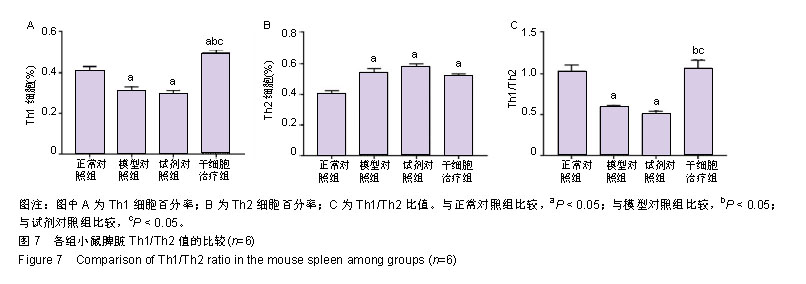| [1]Finzel S, Schaffer S, Rizzi M, et al. Pathogenesis of systemic lupus erythematosus. Z Rheumatol. 2018;77(9):789-798.[2]Di Battista M, Marcucci E, Elefante E, et al. One year in review 2018: systemic lupus erythematosus. Clin Exp Rheumatol. 2018;36(5):763-777.[3]Linge P, Fortin PR, Lood C, et al. The non-haemostatic role of platelets in systemic lupus erythematosus. Nat Rev Rheumatol. 2018;14(4):195-213.[4]Oon S, Huq M, Godfrey T, et al. Systematic review, and meta-analysis of steroid-sparing effect, of biologic agents in randomized, placebo-controlled phase 3 trials for systemic lupus erythematosus. Semin Arthritis Rheum. 2018;48(2): 221-239.[5]Zhu Y, Feng X. Genetic contribution to mesenchymal stem cell dysfunction in systemic lupus erythematosus. Stem Cell Res Ther. 2018;9(1):149.[6]Wang D, Sun L. Stem cell therapies for systemic lupus erythematosus: current progress and established evidence. Expert Rev Clin Immunol. 2015;11(6):763-769.[7]Chalayer É, Ffrench M, Cathébras P. Aplastic anemia as a feature of systemic lupus erythematosus: a case report and literature review. Rheumatol Int. 2015;35(6):1073-1082.[8]Liang J, Sun L. Mesenchymal stem cells transplantation for systemic lupus erythematosus. Int J Rheum Dis. 2015;18(2): 164-171.[9]王治国,刘学明,佟胜全,等.骨髓间充质干细胞移植治疗系统性红斑狼疮[J].中国组织工程研究,2016,20(10):1461-1467.[10]阮光萍,王金祥,杨建勇,等.系统性红斑狼疮小鼠骨髓间充质干细胞的成骨、成脂分化能力下降[J].中国组织工程研究,2014,18(1): 1-6. [11]Liao J, Chang C, Wu H, et al. Cell-based therapies for systemic lupus erythematosus. Autoimmun Rev. 2015;14(1): 43-48.[12]Martin PE, O'Shaughnessy EM, Wright CS, et al. The potential of human induced pluripotent stem cells for modelling diabetic wound healing in vitro. Clin Sci (Lond). 2018;132(15):1629-1643.[13]Zhou R, Jiang G, Tian X, et al. Progress in the molecular mechanisms of genetic epilepsies using patient-induced pluripotent stem cells. Epilepsia Open. 2018;3(3):331-339.[14]Rowland HA, Hooper NM, Kellett KAB. Modelling Sporadic Alzheimer's Disease Using Induced Pluripotent Stem Cells. Neurochem Res. 2018;43(12):2179-2198.[15]Pocock JM, Piers TM. Modelling microglial function with induced pluripotent stem cells: an update. Nat Rev Neurosci. 2018;19(8):445-452.[16]Hwang Y, Broxmeyer HE, Lee MR. Generating autologous hematopoietic cells from human-induced pluripotent stem cells through ectopic expression of transcription factors. Curr Opin Hematol. 2017;24(4):283-288.[17]Nikitina TV, Menzorov AG, Kashevarova AA, et al. Induced pluripotent stem cell line, IMGTi003-A, derived from skin fibroblasts of an intellectually disabled patient with ring chromosome 13. Stem Cell Res. 2018;33:260-264.[18]丁桃,李阳,唐睿珠,等.急性肺损伤患者诱导性多能干细胞系的建立[J].南方医科大学学报,2014,34(10):1414-1419.[19]陈旭东,范文娟,袁科理,等.不同培养条件对小鼠诱导性多能干细胞分化为神经元样细胞的影响[J].细胞与分子免疫学杂志,2015, 31(9):1216-1219,1223.[20]Schwarz N, Uysal B, Rosa F, et al. Generation of an induced pluripotent stem cell (iPSC) line from a patient with developmental and epileptic encephalopathy carrying a KCNA2 (p.Leu328Val) mutation. Stem Cell Res. 2018;33:6-9.[21]Sui W, Hou X, Che W, et al. Hematopoietic and mesenchymal stem cell transplantation for severe and refractory systemic lupus erythematosus. Clin Immunol. 2013;148(2):186-197.[22]Fliefel R, Ehrenfeld M, Otto S. Induced pluripotent stem cells (iPSCs) as a new source of bone in reconstructive surgery: A systematic review and meta-analysis of preclinical studies. J Tissue Eng Regen Med. 2018;12(7):1780-1797.[23]Celhar T, Fairhurst AM. Modelling clinical systemic lupus erythematosus: similarities, differences and success stories. Rheumatology (Oxford). 2017;56(suppl_1):i88-i99.[24]De Groof A, Hémon P, Mignen O, et al. Dysregulated Lymphoid Cell Populations in Mouse Models of Systemic Lupus Erythematosus. Clin Rev Allergy Immunol. 2017;53(2): 181-197.[25]Shin MS, Lee N, Kang I. Effector T-cell subsets in systemic lupus erythematosus: update focusing on Th17 cells. Curr Opin Rheumatol. 2011;23(5):444-448.[26]Smirnova EV, Krasnova TN, Proskurnina EV, et al. Role of neutrophil dysfunction in the pathogenesis of systemic lupus erythematosus. Ter Arkh. 2017;89(12):110-113.[27]Dammacco R. Systemic lupus erythematosus and ocular involvement: an overview. Clin Exp Med. 2018;18(2):135-149.[28]Álvarez K, Vasquez G. Damage-associated molecular patterns and their role as initiators of inflammatory and auto-immune signals in systemic lupus erythematosus. Int Rev Immunol. 2017;36(5):259-270.[29]Mok CC. Calcineurin inhibitors in systemic lupus erythematosus. Best Pract Res Clin Rheumatol. 2017;31(3): 429-438.[30]Floris A, Piga M, Cauli A, et al. Predictors of flares in Systemic Lupus Erythematosus: Preventive therapeutic intervention based on serial anti-dsDNA antibodies assessment. Analysis of a monocentric cohort and literature review. Autoimmun Rev. 2016;15(7):656-663.[31]Bai Y, Tong Y, Liu Y, et al. Self-dsDNA in the pathogenesis of systemic lupus erythematosus. Clin Exp Immunol. 2018; 191(1):1-10.[32]Momtazi-Borojeni AA, Haftcheshmeh SM, Esmaeili SA, et al. Curcumin: A natural modulator of immune cells in systemic lupus erythematosus. Autoimmun Rev. 2018;17(2):125-135.[33]王颍翠,潘兴华.间充质干细胞对系统性红斑狼疮T、B细胞的免疫调节机制[J].中国组织工程研究,2017,21(29):4734-4741.[34]Anolik JH. B cell biology: implications for treatment of systemic lupus erythematosus. Lupus. 2013;22(4):342-349.[35]Wang D, Huang S, Yuan X, et al. The regulation of the Treg/Th17 balance by mesenchymal stem cells in human systemic lupus erythematosus. Cell Mol Immunol. 2017;14(5): 423-431. |
.jpg)


.jpg)
.jpg)